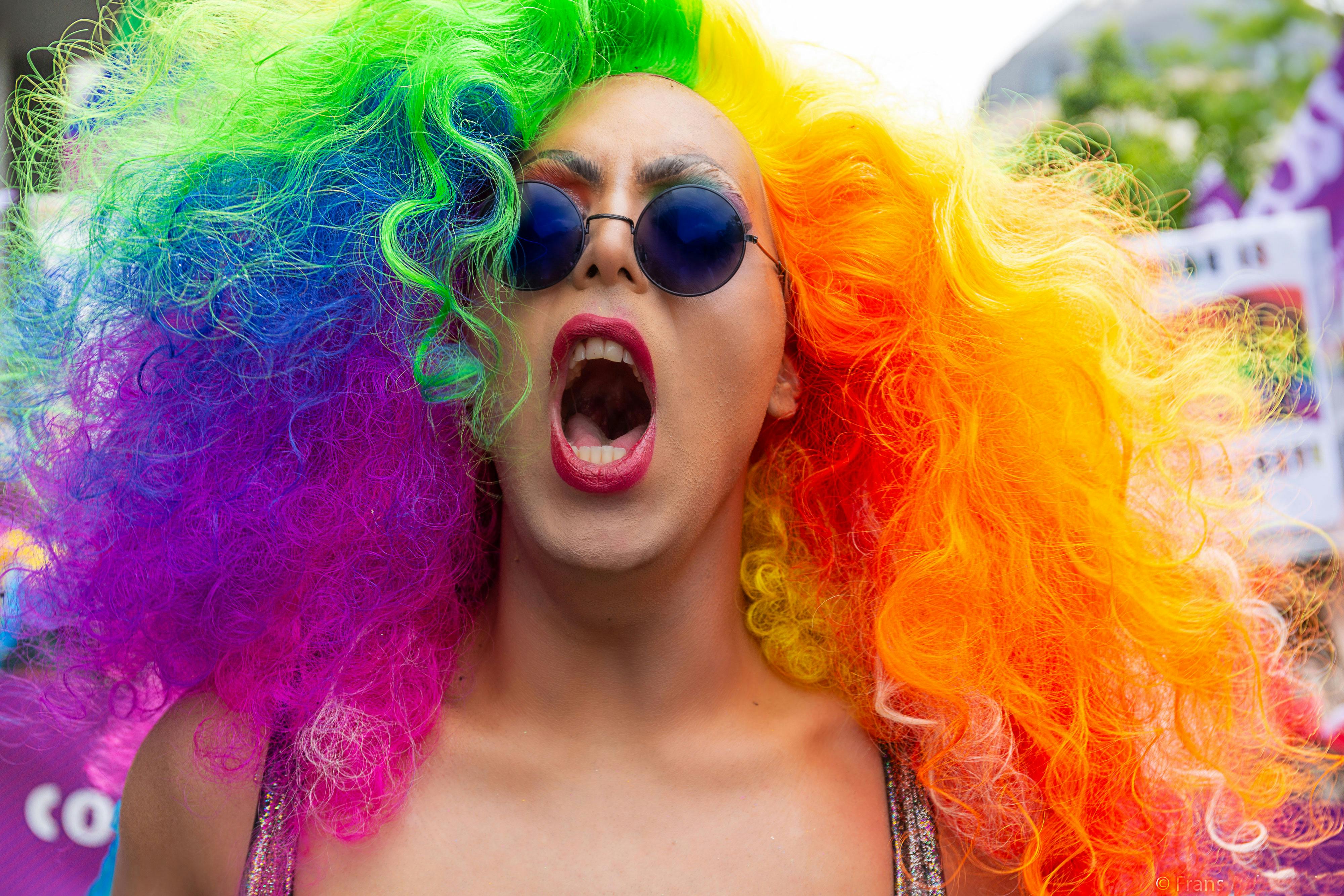Why Does Lawyers Wear Wigs

Lawyers have been wearing wigs for centuries, and the tradition continues to this day. Wigs are an essential part of a lawyer’s attire, adding to their sense of authority and gravitas in the courtroom. Wearing a wig is also a way for lawyers to show respect for the law and its traditions, as well as acknowledging their place in legal history. Beyond that, there are numerous practical reasons why lawyers choose to wear wigs – from protecting their own hair from damage caused by long court days, to creating an air of professionalism in any given situation.Lawyers in the UK and other Commonwealth countries historically wear wigs when appearing in court. This tradition dates back to the 1700s when wigs were a fashionable item of clothing for all men. Wigs were seen as a sign of social status and wealth, so it was natural for lawyers to don them as a badge of their profession. The wigs also cover some of the lawyer’s hair, which is thought to make them appear more dignified and serious in court. They are also used to draw attention away from the lawyer’s identity and focus on their arguments instead.
The History of Wigs in Law
The use of wigs in law has been an important part of legal proceedings since the 17th century. Wigs are a traditional form of headgear worn by lawyers and judges, and they remain an important part of legal proceedings today. Wigs have served as a symbol of authority in the courtroom, as well as providing a sense of dignity and respect to those involved in the legal process.
The origin of wigs in law can be traced back to the 1600s when they were first worn by lawyers and judges in England. At this time, wigs were considered to be fashionable and were often used by wealthy people to demonstrate their status. The style of wig worn at this time was very elaborate and often featured long curls or plaits. By the early 1700s, wigs had become a standard part of legal attire for both lawyers and judges.
During this period, wigs served a number of different purposes in law. They provided a sense of formality to proceedings, allowing for an atmosphere that was more conducive to serious debate and discussion between participants. Additionally, they helped give lawyers and judges greater authority in courtrooms by making them appear more dignified and powerful than other participants.
In addition to providing a sense of formality, wigs also served another purpose – helping distinguish between different classes within the judicial system. During this period, only members of the upper classes were allowed to wear full-sized wigs while members from lower classes had to wear smaller versions known as “bobbed” or “cut” wigs. This distinction was meant to emphasize the superiority of those from higher classes while also discouraging those from lower classes from attempting to take advantage of their positions within society.
Although they are no longer necessary for legal proceedings today, wigs remain an important part of the history and tradition associated with law. They are still worn by some judges during certain formal occasions or ceremonies as a sign respect for past legal traditions.
The Practical Benefits of Wigs
Wigs are becoming a popular choice for people who want to change their appearance without resorting to permanent hair styling solutions. Wigs offer a quick and easy way to change your look, and there are many practical benefits you can enjoy when wearing one.
For starters, wigs can provide coverage for hair loss due to medical conditions or treatments such as chemotherapy. Wearing a wig can help you maintain your confidence and self-esteem during a difficult time. Additionally, wigs can be used to protect your own hair from damage caused by daily styling, chemical treatments, or environmental factors like sun and wind exposure.
Moreover, wigs are an economical option for those who want to experiment with different hairstyles without spending a lot of money on salon visits and products. You can purchase a variety of different wigs so that you have options for different occasions or just for fun. With the wide range of colors, lengths, and styles available on the market today, you’re sure to find something that fits your needs perfectly.
Finally, wigs are also useful for those who have sensitive scalps or allergies that make it difficult to use certain products or treatments on their own hair. Wearing a wig eliminates the need for harsh chemicals or products that could aggravate sensitive skin or cause allergic reactions. This makes them an ideal solution for those looking to avoid such issues altogether.
In summary, wigs offer numerous practical benefits that make them an attractive option for many people looking to switch up their look without making any permanent changes. From protecting one’s hair from damage and providing coverage for medical conditions to being an economical way to try out different hairstyles—wearing a wig is an excellent way to change up your look in a jiffy!
How to Wear a Lawyer’s Wig
Wearing a lawyer’s wig is an important part of the ceremonies and traditions associated with legal practice. In some countries, such as the United Kingdom, wigs are mandatory when appearing in court. Whether you’re wearing it for ceremonial purposes or simply to make a statement, here are some tips on how to wear a lawyer’s wig properly.
First, make sure your wig is clean and properly groomed. Wigs should be combed and brushed out regularly to maintain their shape and texture. If you don’t have time to do this yourself, consider having your wig professionally cleaned and maintained by a barber or hair stylist.
When putting on your lawyer’s wig, start by placing it at the back of your head just above your neckline. Make sure the front is level with your forehead and that the sides are even with your temples. Then wrap the straps around your head until they meet in front of your chin. Finally, secure the straps under your chin with the snaps provided.
The most important thing to remember when wearing a lawyer’s wig is that it should fit comfortably without slipping off or being too tight around your head. If you find that the wig is too tight or slipping off, consider having it adjusted by a professional barber or hair stylist who can make any necessary adjustments for you.
Finally, remember to take off your lawyer’s wig before leaving court and store it in its box until you need it again. Taking care of your lawyer’s wig will ensure that it looks great every time you wear it!

Types of Lawyer’s Wigs
Lawyers wear wigs as an integral part of their professional attire. Wigs come in a variety of styles and colors, and are a key part of the traditional regalia associated with legal professions. There are four main types of wigs that lawyers wear: the full-bottomed wig, the tie-wig, the bobbed wig, and the barrister’s wig.
Full-Bottomed Wig
The full-bottomed wig is the most traditional style of wig worn by lawyers. It is made up of long, flowing hair that covers the entire head and is usually dark brown or black in color. The full-bottomed wig is typically worn for more formal court appearances, such as trials and appeals. It is also commonly seen on barristers in England and Wales.
Tie-Wig
The tie-wig is a less formal style of wig that is often seen in courtrooms. This type of wig consists of short hair that is tied back with a ribbon or string at the back. The tie-wig is most commonly seen on judges and solicitors in England and Wales.
Bobbed Wig
The bobbed wig is another less formal style of lawyer’s wig. This type consists of short hair that has been cut into a bob style at the back, with the hair at the sides being slightly longer than at the back. The bobbed wig is typically seen on solicitors in Scotland and Ireland as well as some barristers in England and Wales.
Barrister’s Wig
The barrister’s wig is a more modern style of lawyer’s wig that has become increasingly popular over recent years. This type consists of short hair that has been styled into a swept-back look at the back, with longer hair around the sides that extends past the ears. The barrister’s wig can be seen on barristers across England, Wales, Scotland, Ireland, Australia, New Zealand, Canada, India, South Africa and other Commonwealth countries where they are still worn today as part of their dress code in courtrooms.
Lawyer’s Attire with a Wig
For centuries, lawyers in the United Kingdom have been required to wear a wig when appearing in court. In some instances, wigs are also worn when making an appearance at a lower court. In recent years, the wearing of the wig has been discouraged in some circumstances and is no longer mandatory for many court appearances. However, certain traditions still remain and it is important for lawyers to be aware of the traditional attire when appearing in court. The traditional lawyer’s attire with a wig consists of a black gown, white bands around the neck, and a full-bottomed wig. The gown is usually long-sleeved and fastened at the front with either buttons or a belt. The bands are typically made of white linen or silk and worn around the neck like a scarf. The wig is usually made of horsehair or synthetic fibers and covers most of the head.
Lawyer’s Attire Without a Wig
In recent years, many lawyers have opted to forego wearing the traditional full-bottomed wig when appearing in court. This decision is often based on personal preference or comfort rather than any legal requirement. When deciding what to wear without a wig, it is important for lawyers to consider their own individual style as well as professional standards. Traditional lawyer’s attire without a wig typically consists of black trousers or skirts paired with a plain white shirt and dark suit jacket or blazer. For women, this can also include wearing tailored knee-length dresses instead of trousers or skirts. Accessories such as ties and cufflinks are also acceptable but should be kept simple and professional looking. It is important for lawyers to remember that although they may not be required to wear wigs, they should still maintain an air of professionalism in their attire regardless of whether they choose to wear one or not.
Modern Use of Legal Wigs
Legal wigs are still used in modern courtrooms, most famously in the United Kingdom. The wigs worn by judges and barristers are made from horsehair and symbolically represent the authority of the law. The traditional black wig is worn by barristers when they appear in court, while judges wear a white wig with a black band around it. In addition to being a symbol of authority, the wig also serves another purpose: to separate legal proceedings from everyday life.
The use of legal wigs has declined over time as more contemporary forms of dress have become acceptable in courtrooms. However, there are still cases where the tradition is maintained in the UK courts. For instance, members of Parliament and other dignitaries who appear in court must wear a full-bottomed wig. This is intended to show respect for tradition and respect for the law.
In recent years, legal wigs have become something of a fashion statement as well. Many celebrities have been seen donning them on the red carpet or at awards ceremonies as a way to add some flair to their outfits. Wearing a legal wig can also be seen as an homage to those who have worked hard to uphold justice and maintain the rule of law throughout history.
Overall, legal wigs remain an important part of courtroom proceedings in many countries around the world – including the UK – and serve as a reminder that justice should be respected and upheld at all times.

Conclusion
The practice of wearing wigs by lawyers is a tradition that dates back hundreds of years. It is a reflection of the respect that lawyers must have for the rule of law and the gravity of their role in society. It is also a way for attorneys to show they are professional and knowledgeable about the law. Wigs are still worn in many countries, especially in common law countries like England, Australia, and Canada. For many lawyers, wearing a wig is seen as a sign of respect for their profession and the legal system.
Nevertheless, it is important to note that wigs are no longer mandatory in most countries today. In some countries, such as England and Wales, wigs are only worn by certain judges who preside over certain types of cases. In other countries, such as Canada and Australia, wigs are no longer routinely worn at all. Even so, many attorneys continue to wear them out of tradition or personal preference.
In conclusion, the practice of wearing wigs by lawyers has been an important part of legal tradition for centuries. Although it is no longer mandatory in many places today, many attorneys still choose to wear them out of respect for their profession and the legal system or out of personal preference.
